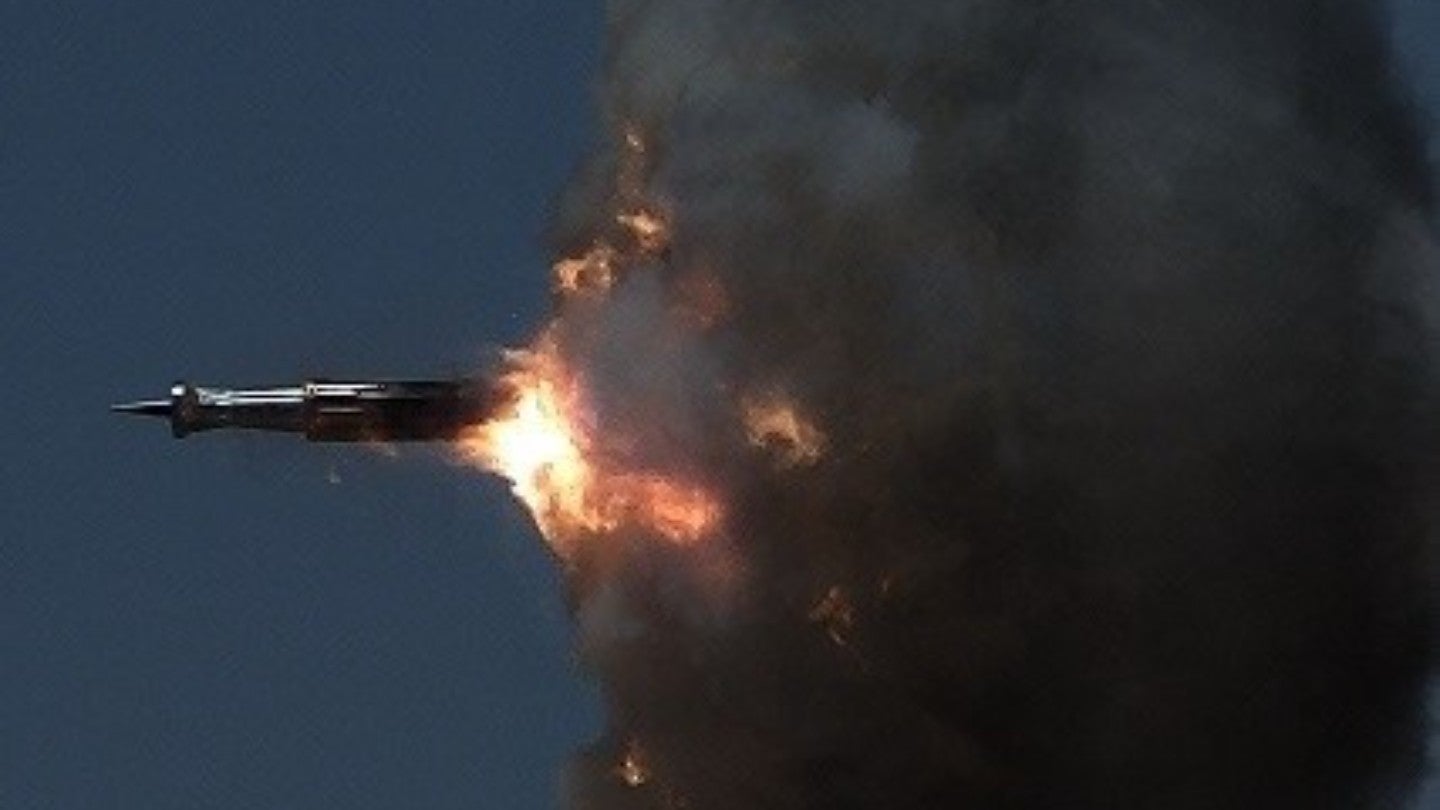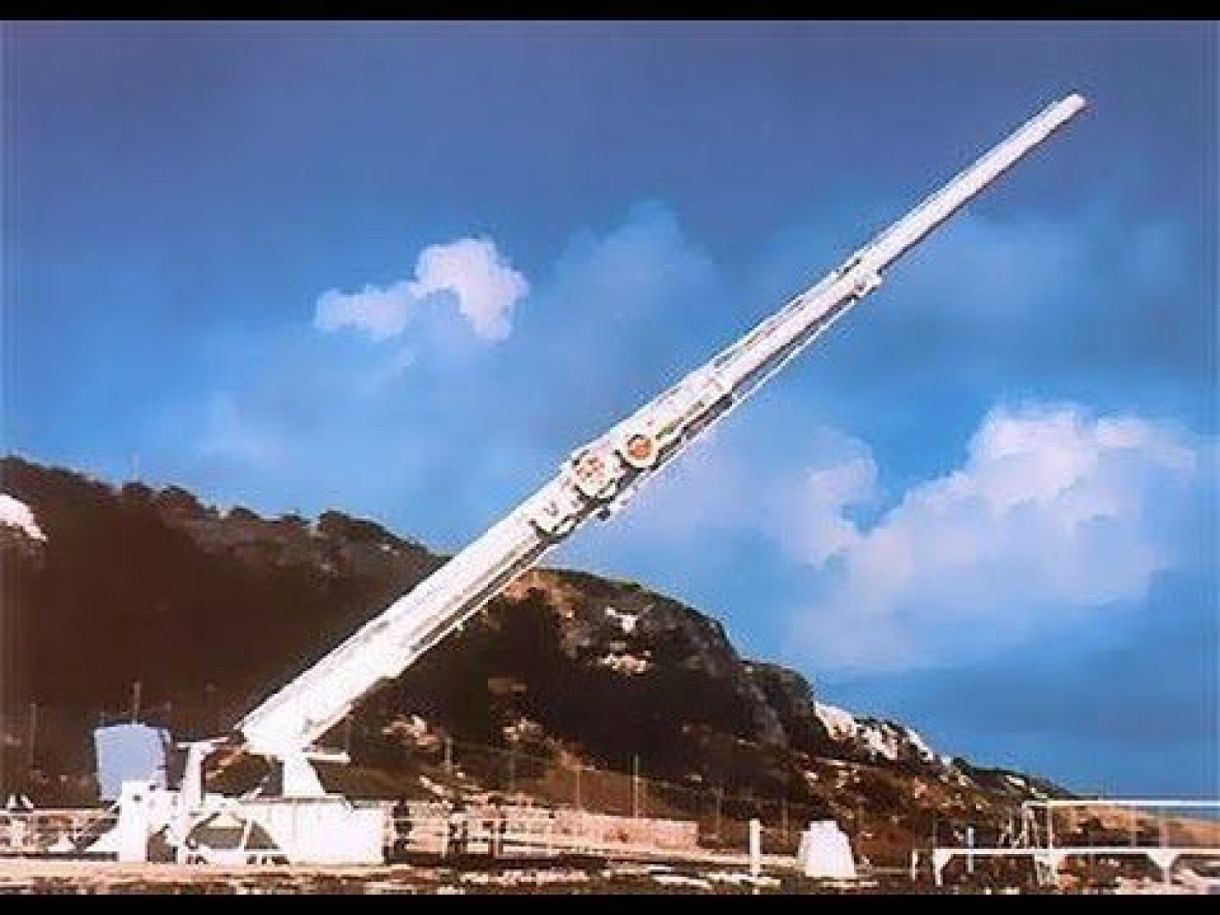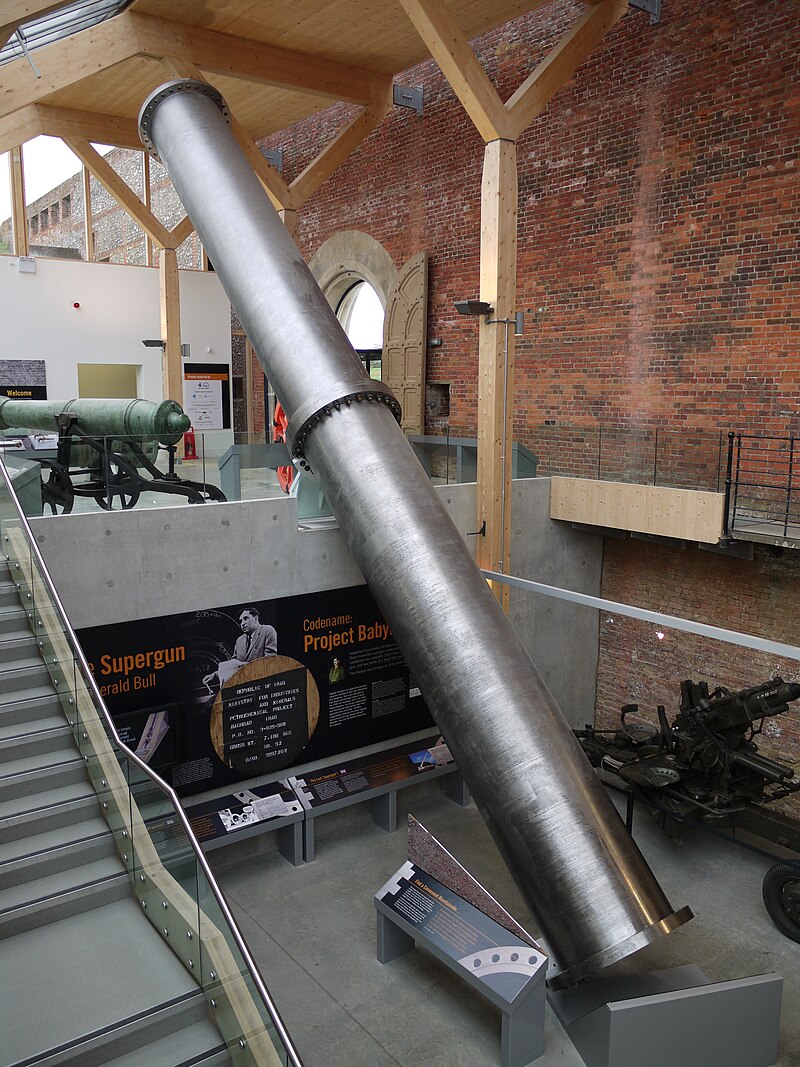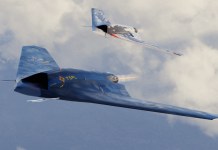The US Army is working on a program to develop a new artillery round that can strike targets much farther than even some missiles. A new type of 155-millimeter artillery round developed by BAE Systems struck a target over 109 kilometers in a test carried out in December 2022.
This is the longest range ever realized by the artillery cannon that was used to fire this new type of artillery round, and it exceeds the range of an average 155-millimeter shell by more than three times.
According to a company press release, the round was fired during a test carried out by a US Army Extended Range Cannon Artillery, or ERCA, Howitzer Test Bed, at White Sands Missile Range in New Mexico.
BAE Systems is currently under contract with the US Army to develop and test the new round for the XM1155 Extended Range Artillery Projectile program. The company claims the new precision-guided 155-millimeter shell can also strike a moving target.
As per reports, the new round relies on glide fins for navigation toward its target, and it can travel far beyond the roughly 25-kilometer range of the US Army’s standard 155-millimeter shell. The Excalibur 155-millimeter round, designed by BAE System, which also uses fins to navigate toward its target, has a range of about 38.62 kilometers.

However, unlike the Excalibur, BAE System’s new round uses a sabot configuration, which has the same rear diameter as a standard shell to capture the explosive energy of the round’s propellant. However, it tapers to a thinner warhead.
Also, according to Chris Laski, BAE’s Director of Business Development, the new round is simpler to use than other types and less susceptible to error.
Jim Miller, BAE System’s vice president of business development for combat mission systems, said that the new BAE round also has electronic-warfare defenses while noting that Russia’s ability to jam the Global Positioning System (GPS) emerged as an important consideration in the ongoing conflict in Ukraine.
With the help of a new artillery round developed by BAE Systems, the US military could take out long-range targets that otherwise have to be destroyed using a more expensive missile.
The company has not stated a price for the new round. Miller said that it would be less than US$85,000 per round. To put into perspective, the US Army’s Guided Multiple Launch Rocket System (MLRS), with a range of around 70 kilometers, can cost as much as US$ 168,000 per round as per the US Army’s 2023 budget.

Miller said that BAE is still testing the round as part of the US Army’s XM1155 program, which is aimed at developing long-range artillery, and if the tests are successful, it could become a program of record in 2025.
Using artillery rounds as an alternative to missiles is not new, as even Saddam Hussein of Iraq had once hoped to acquire what is known as the ‘supergun’ to fire projectiles up to a distance of around 1000 kilometers!
Supergun Technology
In the 1960s, Gerald Bull, a Canadian inventor and one of the world’s leading artillery experts, began working with the US and Canadian governments on supergun technology.
His designs were initially used to test supersonic flight without requiring a costly wind tunnel by firing projectiles at short distances through the barrel of a large gun.
Much of Bull’s career was spent in government-funded weapons research, designing rockets and guns. However, his actual ambition was to use his designs to launch satellites, not missiles. He had high hopes that supergun technology could revolutionize space launches by removing the requirement of conventional rockets.
In 1961, Bull began working on the High-Altitude Research Project (HARP), a joint program between the US and Canadian governments. Bull and his colleagues used modified ex-Navy guns to fire weather probes into sub-orbit and back down again.
However, the project was canned in 1967 because of the costly Vietnam conflict before they could get any objects into orbit. However, Bull was teased with the possibility of creating a gun to launch satellites into orbit.
Bull liked the idea because it would negate the need for multiple rocket stages to reach orbit, as the first moments of a conventional rocket launch require massive energy to move the rocket. This is when the vehicle is filled with the most fuel, and the atmosphere is also at its thickest. Moreover, rocket motors are also expensive.
Andrew Higgins, a professor at the Department of Mechanical Engineering at McGill University, Canada, explains that Bull wanted to reduce the cost of space launches. “Rather than throwing away the first stage of a rocket, using a large gun for the first stage would enable this hardware to be reused and easily serviced,” he said.
One might think that satellites could not survive the massive g-force of acceleration of a space gun launch. However, according to Higgins, this is often exaggerated.
“Military artillery shells today have GPS and laser-guidance optics and electronics that survive these accelerations so that it can be done. Not everything can be launched this way, but a gun launch is well suited for launching fuel and building materials,” Higgins said.
He noted that pushing through the lower part of the atmosphere at high speeds, which is also denser, is an intense heat transfer problem.

“Ablative coatings and heat shields on the nose of the projectile should be up to the job,” he said while adding that one of the main downsides would be the sonic boom, which is an environmental, or even political, concern.
Nevertheless, Bull was convinced that his supergun designs were the future of space launches but needed funds, and by the 1970s, the rest of the world had lost interest in superguns.
Arms Sales To South Africa; Deal With The Iraqi Government
To fund his space supergun project, Bull began selling weapons through a private company he set up called the Space Research Corporation of Quebec. He started selling arms to the South African government.
In 1976, Bull was arrested in South Africa for violating the United Nations arms embargo and served six months in a US prison. After his release, he again started selling arms to South Africa and was fined US$55,000 for international arms dealing.
Frustrated by the interference from the Canadian and US governments in his work, Bull moved to Brussels, Belgium, where he started operating through a European company.
In 1981, the Iraqi government contacted Bull to design artillery for them in the Iraq-Iran war. At the time, Saddam Hussein was the Iraqi defense secretary and liked Bull’s designs.
In 1988, the Iraqi government paid Bull $25 million to begin Project Babylon, the first real space gun project. The funding was provided to Bull on the condition that he must continue to work on Iraqi artillery.
Project Babylon started with three superguns, of which two were 1,000-millimeter caliber guns called ‘Big Babylon,’ while the third one was a 350-millimeter caliber gun called ‘Baby Babylon.’ The 1,000-millimeter caliber gun was 156 meters long with a one-meter bore, weighing 1,510 tons overall.
Theoretically, using nine tons of special supergun propellant, Big Babylon could have launched a 2,000-kilogram rocket-assisted projectile carrying a 200-kilogram satellite.
However, to do this, an enormous charge would be required. “One very considerable technical problem with a gun of this size is how you ignite the charge,” says Nicholas Hall, Keeper of Artillery at the Royal Armouries at Fort Nelson, Hampshire, where remaining pieces of Big Babylon are kept on display.

“It burns quickly, but you need a sustained release with such a long barrel. This means you need to solve some far more complicated calculations than with smaller types of artillery,” Hill said.
According to Hill, Bull could have worked it out, though. “We know roughly what the projectiles would have looked like. Something similar to an anti-tank round, where the projectile is housed in a lightweight casing that falls away at the muzzle of the gun. Beyond that, we don’t really know,” he said.
Had Bull been able to work out these issues, the capabilities of Big Babylon would have made the supergun a very cheap way to launch satellites.
Components for the Big Babylon gun were manufactured in the UK, Germany, France, Spain, Switzerland, and Italy. In particular, the massive steel pipes put on display at Fort Nelson were manufactured in the UK by Sheffield Forgemasters.
Hypothetically, Big Babylon would have also been capable of firing a 600-kilogram projectile across 1,000 kilometers, using nine tons of special supergun propellant. This would have put Kuwait and Iran well within striking distance from Iraq.
Bull was not unaware of the possibility that Iraq could have used his supergun technology to fire missiles. However, he noted that this would be an impractical weapon, said Hall.
Hall explained that the vast size of the supergun meant that it would not be possible to move the gun after it was constructed, and it only pointed in one direction and had a slow rate of fire. So, the gun could be easily located and destroyed.
Hall also pointed out that the recoil force from the gun would have been around 27,000 tons, equivalent to a nuclear explosion, which would have registered as a significant seismic event worldwide.
“Everyone would know where it was and immediately known if it had been fired from the seismic tremors it caused. It was completely vulnerable to air attack,” said Hall.
“You couldn’t move it. But of course, when one allows one’s brain to think about what Hussein then did, it’s tempting to consider it as a military threat,” he further said.
Despite its shortcomings, the Iraqi government wanted to weaponize the supergun technology.
“It was meant for long-range attack and also to blind spy satellites,” General Hussein Kamel al-Majeed, who supervised Iraq’s weapons development program, is quoted as saying after he defected to Jordan to work with the United Nations.
“Our scientists were seriously working on that. It was designed to explode a shell in space that would have sprayed a sticky material on the satellite and blinded it.”

By May 1989, Baby Babylon, a 45-meter-long prototype gun, was completed and mounted on a hillside, and tests began. It should have been able to launch a projectile up to 750 kilometers.
However, the following year on March 22, Bull was shot three times in the back and twice in the head as he entered his apartment in Brussels. There were no witnesses of this assassination, and the gun was silenced. The killer was never identified.
Notably, months before his killing, Bull’s flat was often broken into. With the benefit of hindsight, this could be considered a warning of what was about to happen. According to a New York Times report, when the police arrived at the scene, they found that the key was still in his door and his briefcase, which was unopened, contained nearly US$20,000 in cash.
While it remains unknown who killed Bull, the assassination was linked to the Israeli Intelligence agency Mossad, not mainly because of the supergun but because of his work to improve Iraq’s ballistic missile technology.
Others also linked the assassination to the US, the UK, South African Intelligence services, and the Iraqis.
After Bull’s death, Project Babylon went cold, and after two weeks after his assassination, UK customs seized supergun components leaving the port of Teesport. In August 1990, Iraq invaded Kuwait, which ended western involvement with the Iraqi regime.
- Contact the author at tanmaykadam700@gmail.com
- Follow EurAsian Times on Google News




